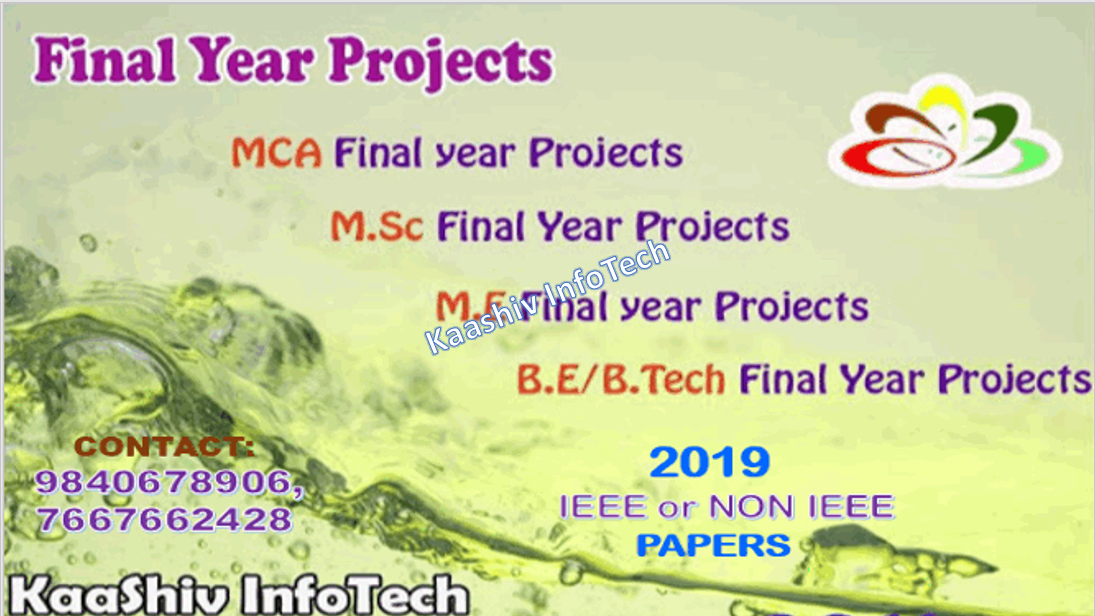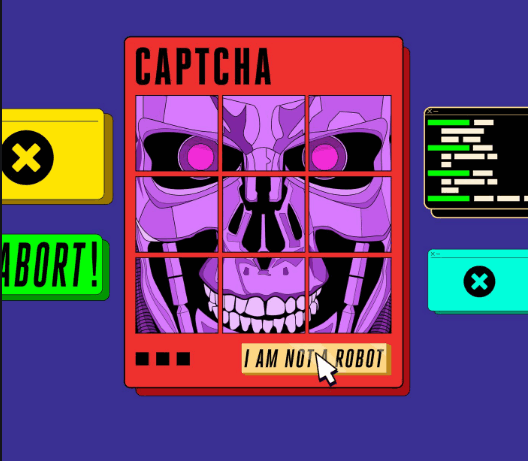ABSTRACT:
• The word network in the term 'neural network' refers to the inter–connections between the neurons in the different layers of each system.
• An example system has three layers. The first layer has its own input neurons which send data through the synapses to the second layer of neurons, then via more synapses to the third layer of output neurons. More complex systems have more layers of neurons with some having increased layers of input and output neurons.
• The synapses store parameters called "weights" that are used to manipulate the data in the calculations. An ANN is usually defined by three sorts of parameters:
1. The interconnection pattern between the various layers of neurons
2. The learning process for updating the weights of the interconnections
3. The activation function that converts a neuron's weighted input to its output activation. Looking for available parking slots has become a significant issue in contemporary urban mobility..
• Smart urban transportation management can be considered as a multifaceted big data challenge.
• It strongly relies on the information collected into multiple, widespread, and heterogeneous data sources as well as on the ability to extract actionable insights from them
• The selection of suitable car parks could be influenced by driving and waiting time, parking prices, availability, and accessibility—while the supply of unused parking slots might depend on parking location, events within the area, traffic flow, and weather.
• This project is focused on presenting the research results regarding a solution to predict the number of available parking slots
EXISTING SYSTEM:
• In the existing system, Allocation of cars is happened in the manual way.
• Human errors are unavoidable and the cars will be allocated unevenly too.
• Integrated centralized management by human manually is impossible.
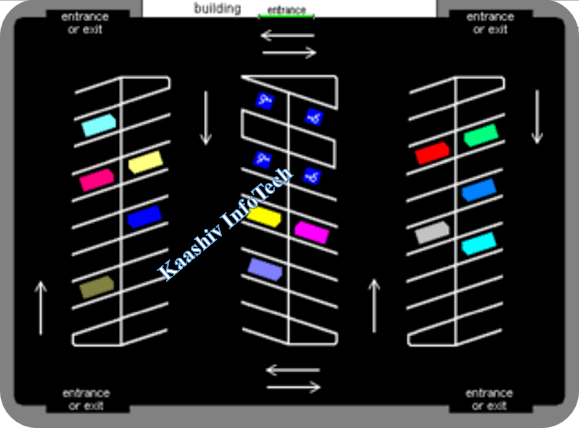
PROPOSED SYSTEM:
• In the Proposed system, An automated machine learning Neural model will allocate the cars.
• A degenerate technique of finding the free space and allocating based on the time slots and location is done in this project.
• Automation involves,
• Accuracy
• Fast and efficient
• No manual intervention
• And preference given
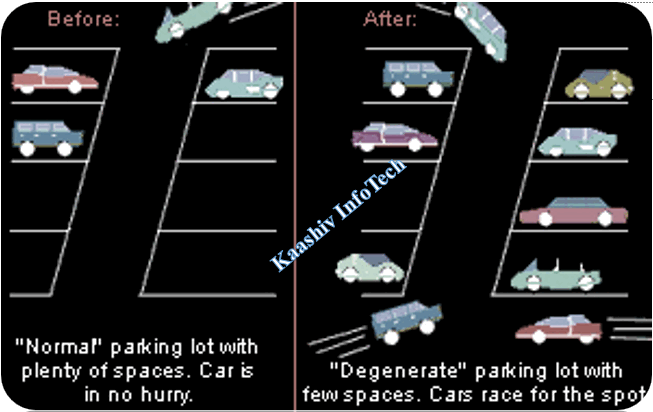
ARCHITECTURE:
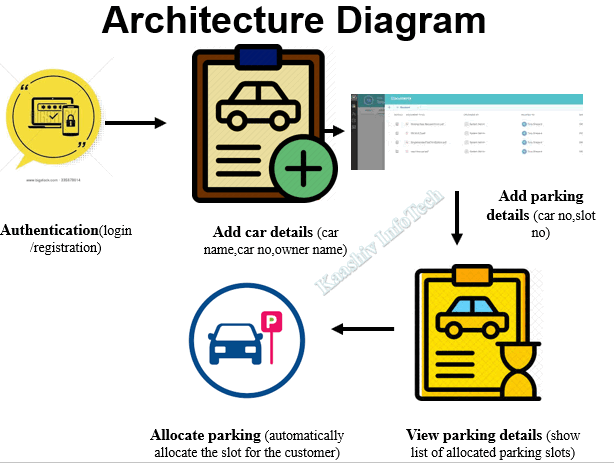
SCREENSHOT:



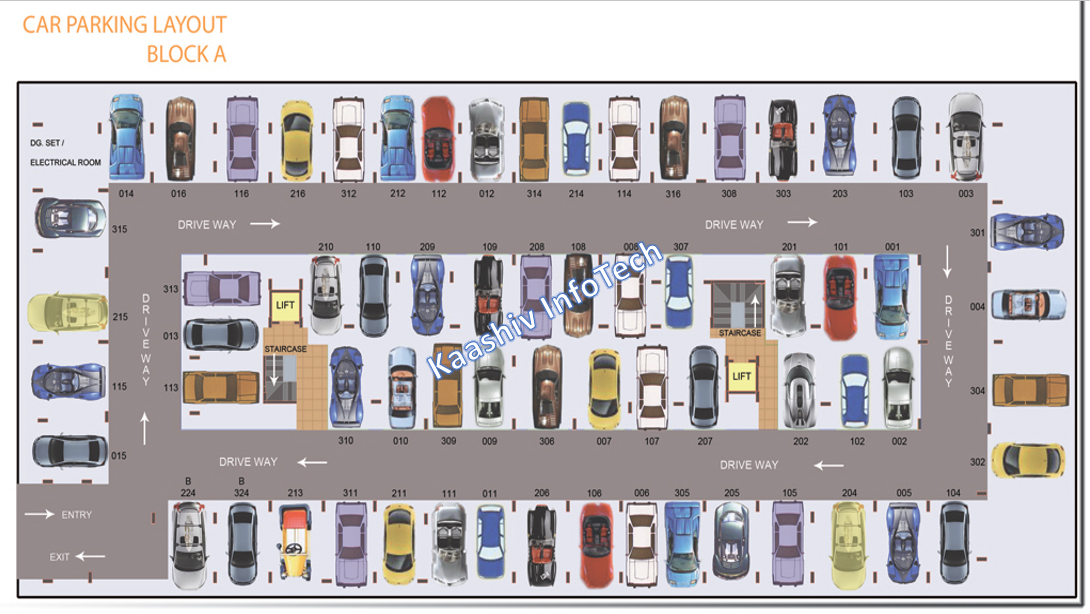
SAMPLE CODE:
using System;
using System.Collections.Generic;
using System.Linq;
using System.Text;
using System.Data;
using System.Data.SqlClient;
namespace ObjectAccess
{
public class ConnectDB
{
SqlConnection sec4_on_01248_cn;
private string sqlpri;
public string sql
{
get
{
return sqlpri;
}
set
{
sqlpri = value;
}
}
public void sec4_on_01248_db()
{
sec4_on_01248_cn = new SqlConnection(@"Data Source=DESKTOP-AFNRKH8\GAYATHRI;Integrated Security=true;Initial Catalog=NetworkVisualization");
//(ConfigurationManager.AppSettings["DBConnection"].ToString());
sec4_on_01248_cn.Open();
}
ProcessVisualizeLibrary.ProcessVisualizeLibrary VisulizeLibrary = new ProcessVisualizeLibrary.ProcessVisualizeLibrary();
public DataTable
SysAdminDetails()
{
sec4_on_01248_db();
DataSet sec4_UDet_01248_se = new DataSet();
SqlDataAdapter sec4_dap_01248_ar = new SqlDataAdapter();
SqlCommand sec4_dap_01248_cd = new SqlCommand("SysAdmin_proc", sec4_on_01248_cn);
sec4_dap_01248_cd.CommandType = CommandType.StoredProcedure;
sec4_dap_01248_ar.SelectCommand = sec4_dap_01248_cd;
sec4_dap_01248_ar.Fill(sec4_UDet_01248_se);
sec4_on_01248_cn.Close();
return (sec4_UDet_01248_se.Tables[0]);
}
public DataTable
getApppagesinfo()
{
sec4_on_01248_db();
DataSet sec4_UDet_01248_se = new DataSet();
SqlDataAdapter sec4_dap_01248_ar = new SqlDataAdapter();
SqlCommand sec4_dap_01248_cd = new SqlCommand("getApppagesinfo", sec4_on_01248_cn);
sec4_dap_01248_cd.CommandType = CommandType.StoredProcedure;
sec4_dap_01248_ar.SelectCommand = sec4_dap_01248_cd;
sec4_dap_01248_ar.Fill(sec4_UDet_01248_se);
sec4_on_01248_cn.Close();
return (sec4_UDet_01248_se.Tables[0]);
}
public DataSet
getusercontexts()
{
sec4_on_01248_db();
DataSet sec4_UDet_01248_se = new DataSet();
SqlDataAdapter sec4_dap_01248_ar = new SqlDataAdapter();
SqlCommand sec4_dap_01248_cd = new SqlCommand("getusercontexts", sec4_on_01248_cn);
sec4_dap_01248_cd.CommandType = CommandType.StoredProcedure;
sec4_dap_01248_ar.SelectCommand = sec4_dap_01248_cd;
sec4_dap_01248_ar.Fill(sec4_UDet_01248_se);
sec4_on_01248_cn.Close();
return (sec4_UDet_01248_se);
}
public DataTable
GetUserDetails()
{
sec4_on_01248_db();
DataSet sec4_UDet_01248_se = new DataSet();
SqlDataAdapter sec4_dap_01248_ar = new SqlDataAdapter();
SqlCommand sec4_dap_01248_cd = new SqlCommand("SystemBasedUser_proc", sec4_on_01248_cn);
sec4_dap_01248_cd.CommandType = CommandType.StoredProcedure;
sec4_dap_01248_ar.SelectCommand = sec4_dap_01248_cd;
sec4_dap_01248_ar.Fill(sec4_UDet_01248_se);
sec4_on_01248_cn.Close();
return (sec4_UDet_01248_se.Tables[0]);
}
public int VerifyCredentials(string usrName, string pwd)
{
sec4_on_01248_db();
DataSet sec4_UDet_01248_se = new DataSet();
SqlDataAdapter sec4_dap_01248_ar = new SqlDataAdapter();
SqlCommand sec4_dap_01248_cd = new SqlCommand("sp_VerifyCredentials", sec4_on_01248_cn);
sec4_dap_01248_cd.CommandType = CommandType.StoredProcedure;
sec4_dap_01248_cd.Parameters.Add(new SqlParameter("@UserName", SqlDbType.VarChar, 50));
sec4_dap_01248_cd.Parameters.Add(new SqlParameter("@Password", SqlDbType.VarChar, 50));
sec4_dap_01248_cd.Parameters[0].Value = usrName;
sec4_dap_01248_cd.Parameters[1].Value = pwd;
sec4_dap_01248_ar.SelectCommand = sec4_dap_01248_cd;
sec4_dap_01248_ar.Fill(sec4_UDet_01248_se);
sec4_on_01248_cn.Close();
return ((int)sec4_UDet_01248_se.Tables[0].Rows[0][0]);
}
public DataSet
GetErrorInfo()
{
sec4_on_01248_db();
DataSet sec4_UDet_01248_se = new DataSet();
SqlDataAdapter sec4_dap_01248_ar = new SqlDataAdapter();
SqlCommand sec4_dap_01248_cd = new SqlCommand("select count(1) as cnt,DBName from temp_rolemember_final group by DBName", sec4_on_01248_cn);
sec4_dap_01248_ar.SelectCommand = sec4_dap_01248_cd;
sec4_dap_01248_ar.Fill(sec4_UDet_01248_se);
sec4_on_01248_cn.Close();
return (sec4_UDet_01248_se);
}
public DataSet
GetErrorInfo1()
{
sec4_on_01248_db();
DataSet sec4_UDet_01248_se = new DataSet();
SqlDataAdapter sec4_dap_01248_ar = new SqlDataAdapter();
SqlCommand sec4_dap_01248_cd = new SqlCommand("select count(1) as cnt,MemberName from temp_rolemember_final group by MemberName", sec4_on_01248_cn);
sec4_dap_01248_ar.SelectCommand = sec4_dap_01248_cd;
sec4_dap_01248_ar.Fill(sec4_UDet_01248_se);
sec4_on_01248_cn.Close();
return (sec4_UDet_01248_se);
}
public int AddNewUser(string strFName, string strLName,
string Mobile,
string UName, string Pwd,
string SecurityQue, string SecurityAns,
string City)
{
sec4_on_01248_db();
string strCmd = "insert into [tblUserDetails] ([FirstName], [LastName],mobile,Username,Password,City,[SecurityQuestion],[SecurityAnswer]) values ('" + strFName + "','" + strLName + "','" + Mobile + "','" + UName + "','" + Pwd + "','" + SecurityQue + "','" + SecurityAns + "','" + City + "')";
SqlCommand sec4_dap_01248_cd = new SqlCommand(strCmd, sec4_on_01248_cn);
int i = 0;
i = sec4_dap_01248_cd.ExecuteNonQuery();
sec4_on_01248_cn.Close();
return i;
}
public DataTable
GetServerDetails()
{
sec4_on_01248_db();
DataSet sec4_UDet_01248_se = new DataSet();
SqlDataAdapter sec4_dap_01248_ar = new SqlDataAdapter();
SqlCommand sec4_dap_01248_cd = new SqlCommand(VisulizeLibrary.ServerMonitorClass(), sec4_on_01248_cn);
sec4_dap_01248_cd.CommandType = CommandType.StoredProcedure;
sec4_dap_01248_ar.SelectCommand = sec4_dap_01248_cd;
sec4_dap_01248_ar.Fill(sec4_UDet_01248_se);
sec4_on_01248_cn.Close();
return (sec4_UDet_01248_se.Tables[0]);
}
public DataTable
GetVMDiskSpace()
{
sec4_on_01248_db();
DataSet sec4_UDet_01248_se = new DataSet();
SqlDataAdapter sec4_dap_01248_ar = new SqlDataAdapter();
SqlCommand sec4_dap_01248_cd = new SqlCommand("VM_DiskSpace", sec4_on_01248_cn);
sec4_dap_01248_cd.CommandType = CommandType.StoredProcedure;
sec4_dap_01248_ar.SelectCommand = sec4_dap_01248_cd;
sec4_dap_01248_ar.Fill(sec4_UDet_01248_se);
sec4_on_01248_cn.Close();
return (sec4_UDet_01248_se.Tables[0]);
}
public DataTable
GetServerDetails1()
{
sec4_on_01248_db();
DataSet sec4_UDet_01248_se = new DataSet();
SqlDataAdapter sec4_dap_01248_ar = new SqlDataAdapter();
string val = VisulizeLibrary.ServerMonitorClass();
SqlCommand sec4_dap_01248_cd = new SqlCommand(VisulizeLibrary.ServerMonitorClass(), sec4_on_01248_cn);
sec4_dap_01248_cd.CommandType = CommandType.StoredProcedure;
sec4_dap_01248_ar.SelectCommand = sec4_dap_01248_cd;
sec4_dap_01248_ar.Fill(sec4_UDet_01248_se);
sec4_on_01248_cn.Close();
return (sec4_UDet_01248_se.Tables[1]);
}
public DataTable
GetServerDetails2()
{
sec4_on_01248_db();
DataSet sec4_UDet_01248_se = new DataSet();
SqlDataAdapter sec4_dap_01248_ar = new SqlDataAdapter();
SqlCommand sec4_dap_01248_cd = new SqlCommand(VisulizeLibrary.ServerMonitorClass(), sec4_on_01248_cn);
sec4_dap_01248_cd.CommandType = CommandType.StoredProcedure;
sec4_dap_01248_ar.SelectCommand = sec4_dap_01248_cd;
sec4_dap_01248_ar.Fill(sec4_UDet_01248_se);
sec4_on_01248_cn.Close();
return (sec4_UDet_01248_se.Tables[2]);
}
public DataTable
GetServerDetails3()
{
sec4_on_01248_db();
DataSet sec4_UDet_01248_se = new DataSet();
SqlDataAdapter sec4_dap_01248_ar = new SqlDataAdapter();
SqlCommand sec4_dap_01248_cd = new SqlCommand(VisulizeLibrary.ServerMonitorClass(), sec4_on_01248_cn);
sec4_dap_01248_cd.CommandType = CommandType.StoredProcedure;
sec4_dap_01248_ar.SelectCommand = sec4_dap_01248_cd;
sec4_dap_01248_ar.Fill(sec4_UDet_01248_se);
sec4_on_01248_cn.Close();
return (sec4_UDet_01248_se.Tables[3]);
}
public DataSet
GetNetworkTraceUtility1()
{
sec4_on_01248_db();
DataSet sec4_UDet_01248_se = new DataSet();
SqlDataAdapter sec4_dap_01248_ar = new SqlDataAdapter();
SqlCommand sec4_dap_01248_cd = new SqlCommand("GetServerNetworkTrace", sec4_on_01248_cn);
sec4_dap_01248_cd.CommandType = CommandType.StoredProcedure;
sec4_dap_01248_ar.SelectCommand = sec4_dap_01248_cd;
sec4_dap_01248_ar.Fill(sec4_UDet_01248_se);
sec4_on_01248_cn.Close();
return (sec4_UDet_01248_se );
}
public DataTable
get_SystemInformation()
{
sec4_on_01248_db();
DataSet sec4_UDet_01248_se = new DataSet();
SqlDataAdapter sec4_dap_01248_ar = new SqlDataAdapter();
SqlCommand sec4_dap_01248_cd = new SqlCommand("select cpu_count,hyperthread_ratio,physical_memory_in_bytes / 1048576 as 'mem_MB',virtual_memory_in_bytes / 1048576 as 'virtual_mem_MB',max_workers_count,os_error_mode, os_priority_class, scheduler_count,max_workers_count from sys.dm_os_sys_info ", sec4_on_01248_cn);
sec4_dap_01248_cd.CommandType = CommandType.Text;
sec4_dap_01248_ar.SelectCommand = sec4_dap_01248_cd;
sec4_dap_01248_ar.Fill(sec4_UDet_01248_se);
sec4_on_01248_cn.Close();
return (sec4_UDet_01248_se).Tables[0];
}
public DataTable
get_SystemGeneralInformation()
{
sec4_on_01248_db();
DataSet sec4_UDet_01248_se = new DataSet();
SqlDataAdapter sec4_dap_01248_ar = new SqlDataAdapter();
SqlCommand sec4_dap_01248_cd = new SqlCommand("select serverproperty('MachineName') MachineName,serverproperty('ServerName') ServerInstanceName,replace(cast(serverproperty('Edition')as varchar),'Edition','') EditionInstalled,serverproperty('productVersion') ProductBuildLevel,serverproperty('productLevel') SPLevel,serverproperty('Collation') Collation_Type,serverproperty('IsClustered') [IsClustered?],convert(varchar,getdate(),102) QueryDate ", sec4_on_01248_cn);
sec4_dap_01248_cd.CommandType = CommandType.Text;
sec4_dap_01248_ar.SelectCommand = sec4_dap_01248_cd;
sec4_dap_01248_ar.Fill(sec4_UDet_01248_se);
sec4_on_01248_cn.Close();
return (sec4_UDet_01248_se).Tables[0];
}
public DataTable
get_ServerProcessInformation()
{
sec4_on_01248_db();
DataSet sec4_UDet_01248_se = new DataSet();
SqlDataAdapter sec4_dap_01248_ar = new SqlDataAdapter();
SqlCommand sec4_dap_01248_cd = new SqlCommand(" select process_kernel_time_ms,process_user_time_ms from sys.dm_os_sys_info ",sec4_on_01248_cn);
sec4_dap_01248_cd.CommandType = CommandType.Text;
sec4_dap_01248_ar.SelectCommand = sec4_dap_01248_cd;
sec4_dap_01248_ar.Fill(sec4_UDet_01248_se);
sec4_on_01248_cn.Close();
return (sec4_UDet_01248_se).Tables[0];
}
public DataTable
get_ReadAndWriteLatency()
{
sec4_on_01248_db();
DataSet sec4_UDet_01248_se = new DataSet();
SqlDataAdapter sec4_dap_01248_ar = new SqlDataAdapter();
SqlCommand sec4_dap_01248_cd = new SqlCommand("ReadAndWriteLatency ", sec4_on_01248_cn);
sec4_dap_01248_cd.CommandType = CommandType.StoredProcedure;
sec4_dap_01248_ar.SelectCommand = sec4_dap_01248_cd;
sec4_dap_01248_ar.Fill(sec4_UDet_01248_se);
sec4_on_01248_cn.Close();
return (sec4_UDet_01248_se).Tables[0];
}
public DataTable
DBTrackMaintenanceCheck()
{
sec4_on_01248_db();
DataSet sec4_UDet_01248_se = new DataSet();
SqlDataAdapter sec4_dap_01248_ar = new SqlDataAdapter();
SqlCommand sec4_dap_01248_cd = new SqlCommand("DBTrackMaintenanceCheck ", sec4_on_01248_cn);
sec4_dap_01248_cd.CommandType = CommandType.StoredProcedure;
sec4_dap_01248_ar.SelectCommand = sec4_dap_01248_cd;
sec4_dap_01248_ar.Fill(sec4_UDet_01248_se);
sec4_on_01248_cn.Close();
return (sec4_UDet_01248_se).Tables[0];
}
}
}
PROJECT MODULES
• HOME PAGE & USER REGISTRATION
• LOGIN PAGE – USER / ADMIN
• VEHICLE ADD PAGE
• PARKING AUTOMATIC ALLOCATION PAGE
• ADMIN WHOLISTIC ALLOCATION VIEW PAGE
• PARKING PAST HISTORY AND COST PAGE
HOME PAGE & USER REGISTRATION
• Car parking automatic allocation becomes the most important business scenario in the current trends.
• These modules will have an entry - a common page for the user and also for the admin.
• Based on the login user, they will decide the entry of the project.
• If there is an additional user needs to be created
• they can go ahead with user registration form.
LOGIN PAGE – USER / ADMIN
• A Common entry point is provided in the main page and from there, the user will login into the system.
• User Login page – User works for the vehicle inputs and allocation will choose this page to enter.
• Admin Login page – It’s owners entry page to validate the works from the higher authority perspective.
VEHICLE ADD PAGE
• Once the user logged into the system, they can add the vehicles and its details. Such as,
– Owner Name
– Vehicle Number
– Owner driving license number
– Vehicle model
– Date and Time of parking
– Number of hours for parking
– Any special parking credentials like offers etc..,
PARKING AUTOMATIC ALLOCATION PAGE
• Based on the date and timing of the parking, An automatic allocation is done with the neural networks algorithms and artificial intelligence system.
• In this module, a clear view of the cars allocated can be visualized with the text bounded on each location.
• A complete visualization of the car parking slots will be displayed on screen.
ADMIN WHOLISTIC ALLOCATION VIEW PAGE
• This page provides a complete picturization in the grid format on all the parking allocation slots
• A list of un allocated locations will be displayed.
• In addition, a clear picturization of the user views and their display data can be visualized in this module.
• This module provides a complete control of “Whats happening” in the system.
PARKING PAST HISTORY AND COST PAGE
• This module can be accessed from the user.
• It provides a clear picture on the past history of the vehicle.
• Any pending amounts related to the car and any extra charges which needs to be incorporated should be manipulated in this module.
• Any valet parking cum offers associated with the customer needs to be manipulated.
ISO certified - Final year projects for mca:
KaaShiv Offers, Final year project for mca. Final year project for mca includes Artificial Intelligence, R-programming, Internet of Things, Machine Learning, python, cyber security, EthicalHacking, networking . This internship includes the topics related to final year projects for mca 2nd year students , final year projects for mca 3rd year students .This company runs by,
• 10 Years Awarded Microsoft Most Valuable Professional
• Google Recognized Experts
• Cisco Recognized Certified Experts
• Microsoft Awarded Certified Experts
• Robotics Experts
• HCL Technologies Awarded Expert
Trainers at KaaShiv InfoTech are real-time Software / IT professionals worked in leading MNCs like,
• CTS
• Wipro,
• TCS,
• Infosys,
• Accenture and
• Mindtree.
The Course curriculum for Final year project for mca is carefully researched and prepared by professionals from MNC to meet the demands expected in the IT industry. After completing the Final year project Training in Chennai at KaaShiv Infotech, students will be familiar with the Software development process followed in IT industry. Below are some of the insights of our Final year project program for mca ,
• Real-time project development and Technology Training by Microsoft Awarded Most Valuable Professiona
• Final year project for mca students involves Full practical training
• Hardware and software tools full support
• Technology training
• Placement training
• Full documentation and report analysis
• R & D projects
• Industrial exposure
• Endorsing Corporate skills
WHAT IS FINAL YEAR PROJECT ?
• The Final year projects plays a crucial role in the teaching-learning process.
• It is also a way of identifying the ability of the student to perform an industrial project or applied research linked to the knowledge discipline.
• A project is defined as an effort to create or modify a specific product or service.
• Projects are temporary work efforts with a clear beginning and end.
• Final year project (or program) any undertaking, carried out individually or collaboratively and possibly involving research or design, that is carefully planned (usually by a project team) to achieve a particular aim
WHAT ARE THE BENEFITS GAINED BY DOING FINAL YEAR PROJECT
• final year projects if done well can add a lot of credibility to your profile.
• And especially your final year projects building experience can help you perform well in core job placements & higher studies admission interviews.
TIPS TO SELECT GOOD FINAL YEAR PROJECTS
>
• Analyze the current trends
• Focus your final year project on any social issue
• Get expert’s assistance whenever possible
• Research about the final year projects done by your seniors
• Refer the research journals published by scholars
• Check the feasibility of your final year project
• Work with organizations like Kaashiv InfoTech
WHY, MCA STUDENTS FINAL YEAR PROJECTS SHOULD BE A REAL TIME FINAL YEAR PROJECTS ?
Final year project for mca students provides a real time exposure for the Final year project for mca students on the latest and trending technologies. Below are some of the Top jobs in the IT Industry Job Openings ,
• Software Developers – Good in Python, Machine Learning, Data Science and AI programming
• BlockChain Administrators
• IOT Specialists
• Cyber Security
• Web Application Developer – Web Designers
• Information Security Analyst – Security Specialist
• Network Engineers / Analys
KaaShiv Infotech, Final year project for mca Student - programme hornes you in the above said skills / job roles from basics to Advanced.
FINAL YEAR PROJECT FOR MCA - PROGRAMME HIGHLIGHTS
• Final year project for mca program duration: 5days/ 10days / Or Any number of days
• Training hours: 3hrs per day
• Software & others tools installation Guidance
• Hardware support
• Final year project for mca Report creation / Project Report creation
• Final year project for mca students based 2 projects ( real time)
• Final year project Certificate & Inplant Training Certificate & Industrial exposure certificate + (Achievement certificate for best performers)
ADVANTAGES OF OUR- FINAL YEAR PROJECT FOR MCA
• Get Real Work Experience
• Get a Taste of Your Chosen Field
• Start Networking
• Helps You Choose a Speciality
• Helps You Become More Self-Confident
• Boosts Your CV
• Increases Your Market Value
FINAL YEAR PROJECT FOR MCA - MATERIALS
• Final year project for mca student , includes Materials after the internship programme
• Technological guidance and materials will be shared in entire year for the students to mold technically.
• Our be student involves Free Projects at the end of the programme.
QUERIES OR CONTACT DETAILS :
Venkat (7667662428) and Asha (7667668009)
EmailID:kaashiv.info@gmail.com ,
priyanka.kaashiv@gmail.com
FINAL YEAR PROJECT FOR MCA- PROGRAMME DURATION :
1 months / 2 months / 3 months to 6 Months ( Any Number of Days - Based on student preferences)
WHO CAN ATTEND THIS FINAL YEAR PROJECT FOR MCA PROGRAMME :
final year project for mca - Programme can be attended by the students who are looking for final year project for mca/ final year project for mca 2nd year/
FINAL YEAR PROJECT FOR MCA - PROGRAMME OUTCOME :
1. Student will be specialized in Block Chain, Artificial Intelligence, Machine Learning, Python and R programming, Application Development
, Web designing and Networking concepts (Basics to Advanced)
2. Covering 45 concepts
3. Students will be getting trained in / writing 45 Programs – Will change based on the durations of the program.
4. 2 Projects and project documents will be given at the end of the program
REFERENCE YOUTUBE URL FOR FINAL YEAR PROJECT FOR MCA :
Check our Internship Training sample videos at this URL –
Check our Internship Training sample videos
REGISTRATION LINK FOR – FINAL YEAR PROJECT FOR MCA :
final year project for mca - Offline - Office training
Fill our online Internship form
FINAL YEAR PROJECT FOR MCA – DEMO LINK :
Check out our Sample final year project for mca Content for the training
inplant-training-in-chennai-for-cse-demo
CHECK OUR PREVIOUS TESTIMONIALS FROM STUDENTS FROM DIFFERENT COUNTRIES AND DIFFERENT STATES :
www.kaashivinfotech.com/testimonials/
CHECK OUR STUDENTS FEEDBACK ON OUR - FINAL YEAR PROJECT FOR MCA :
final year project for mca - Feedback - inplant-training-feedback /
final year project for mca - Feedback - internship-feedback
CHECK OUT THE COLLEGES ATTENDED OUR FINAL YEAR PROJECT FOR MCA
internship-and-inplant-training-attendees/
CHECK OUR SOCIAL SERVICE YOUTUBE CHANNELS :
Check our Social Service youtube channels
Check our Social Service youtube channels
REAL TIME PROJECT :
We ranked Top 200 technological companies in Tamil Nadu, Click here to view
MORE ON OUR, FINAL YEAR PROJECT FOR MCA :
In our, internship on final year project for mca- programme below are following different kind of programmes focused such as,
1. Final year project for mca (or) paid Final year project for mca,
- Kaashiv Provides an in-depth knowledge of software Platform and other relevant software technologies.
2. Final year project for mca work from home – Our company provides facility for the students to learn from home as an Final year project for mca based on latest technological trends.
3. Final year project for mca report – Reports are also provided for the final year projects for students in our company related.
4. Final year project for mca jobs – 100% Job assistance will be provided for the students to gain practical knowledge during the Final year project for mca period in our company.
5. Final year project for mca summer / Winter internship 2019/2020 – Summer / Winter holiday internship in Final year projects will be given to the student based on the developer knowledge base.
6. Final year project for mca interview questions – We provide top trending and frequently asked question for the intern students during the internship period based on software development and trending technologies.
7. Final year project for mca test – Based on the students request, if you are looking for any test to validate your knowledge. we are ready to provide the same.
8. Final year project for mca certificate – Industry recognized certificates will be provided for the students who perform internship in our company based .
9. Final year project for mca online– Learn Final year projects for mca from home, our company perform internship through online too.
10. Final year project for mca ppt / final year projects for mca / projects report – We provide Final year projects for mca based ppts. projects and project reports as materials after the internship in our company.
11. Free final year project for mca - Our company will provide free Final year projects for mca the best students of kaashiv infotech.
12. Project For Diploma Final year projects for mca – We offer project for the diploma Final year project for mca students in our company.
13. Final year project for mca 2nd Year / 3rd Year / B-Tech Students – Our company offers you final year project for mca the above students.
